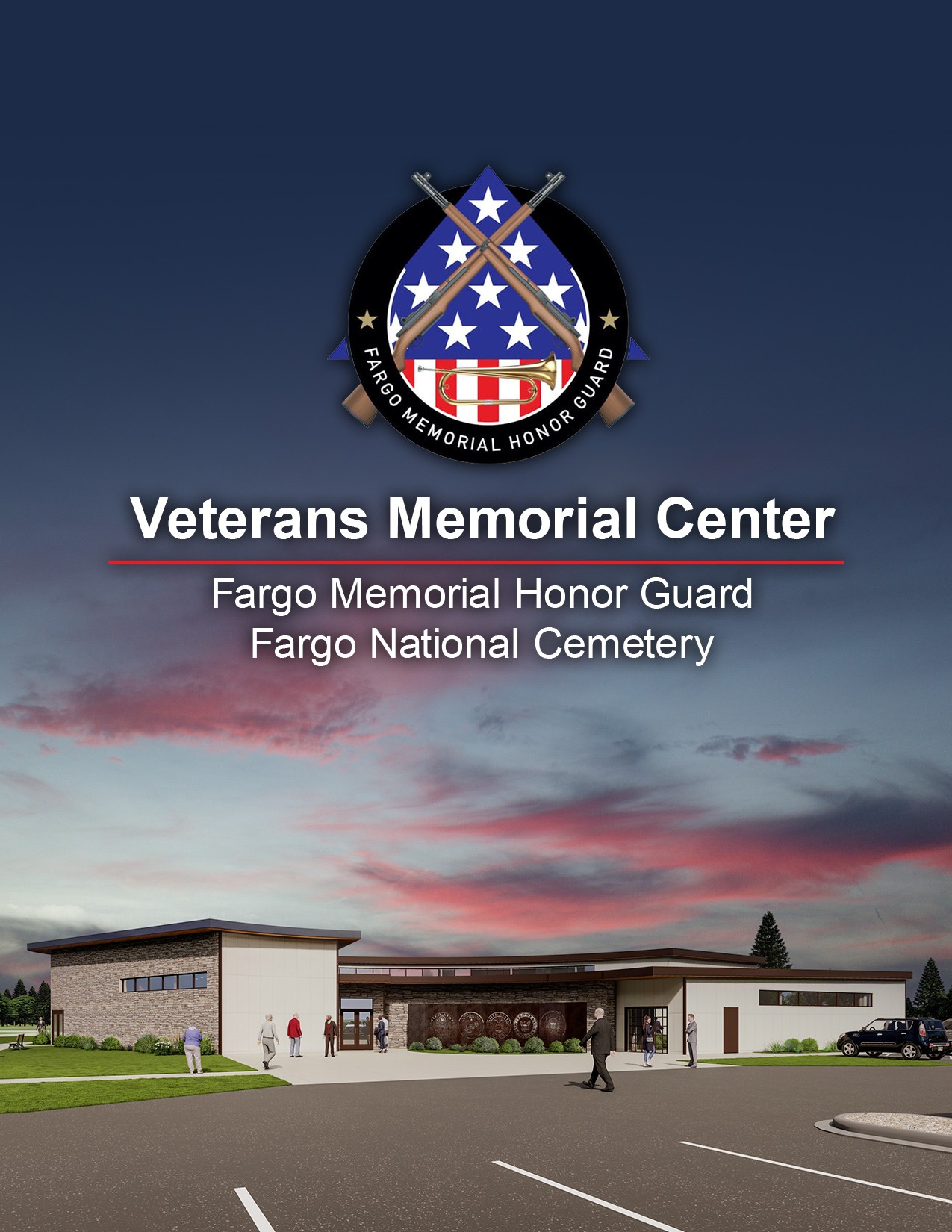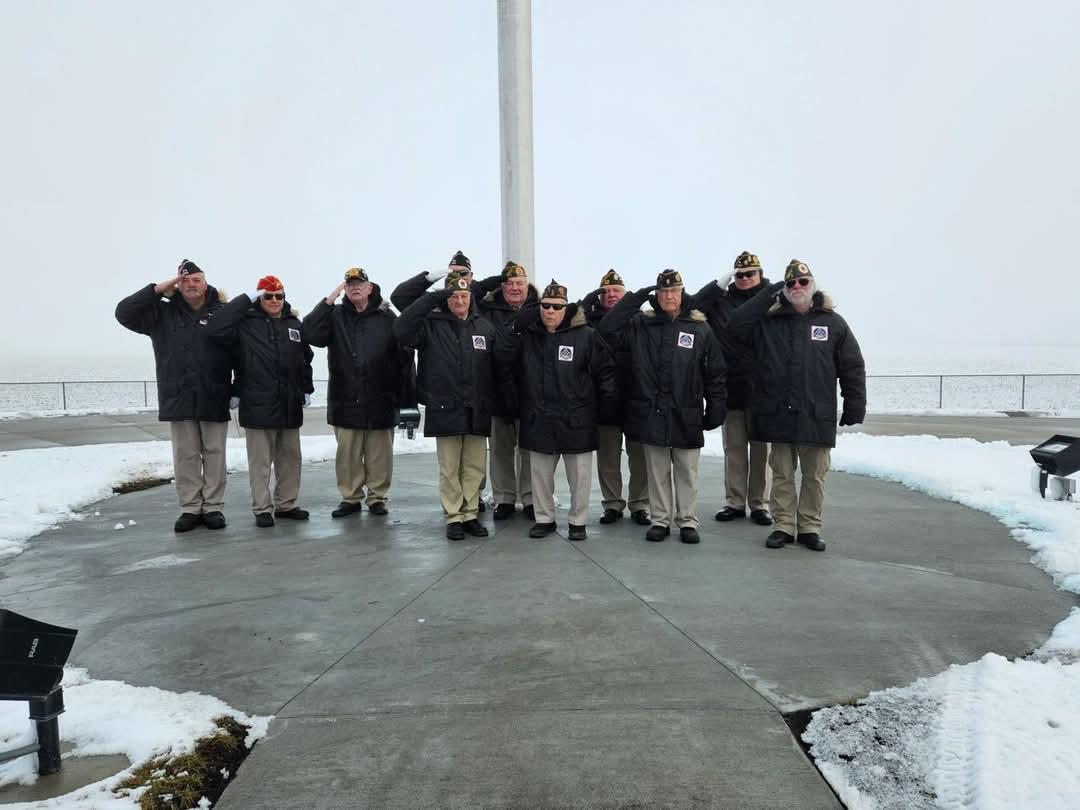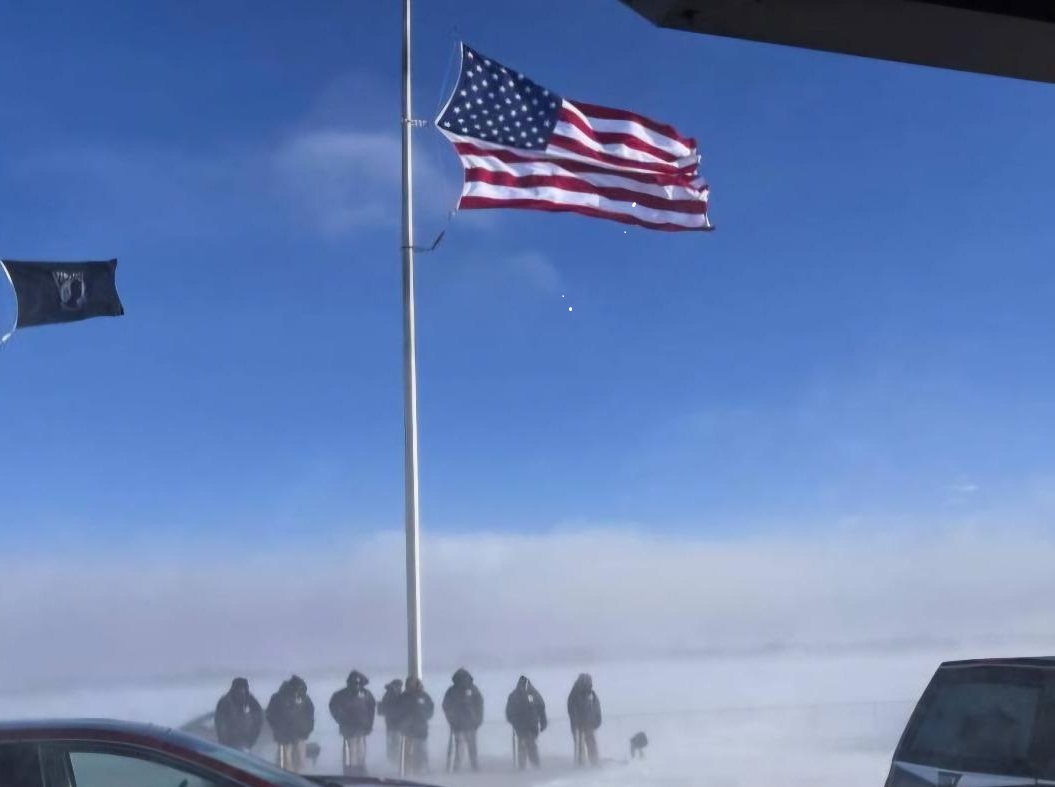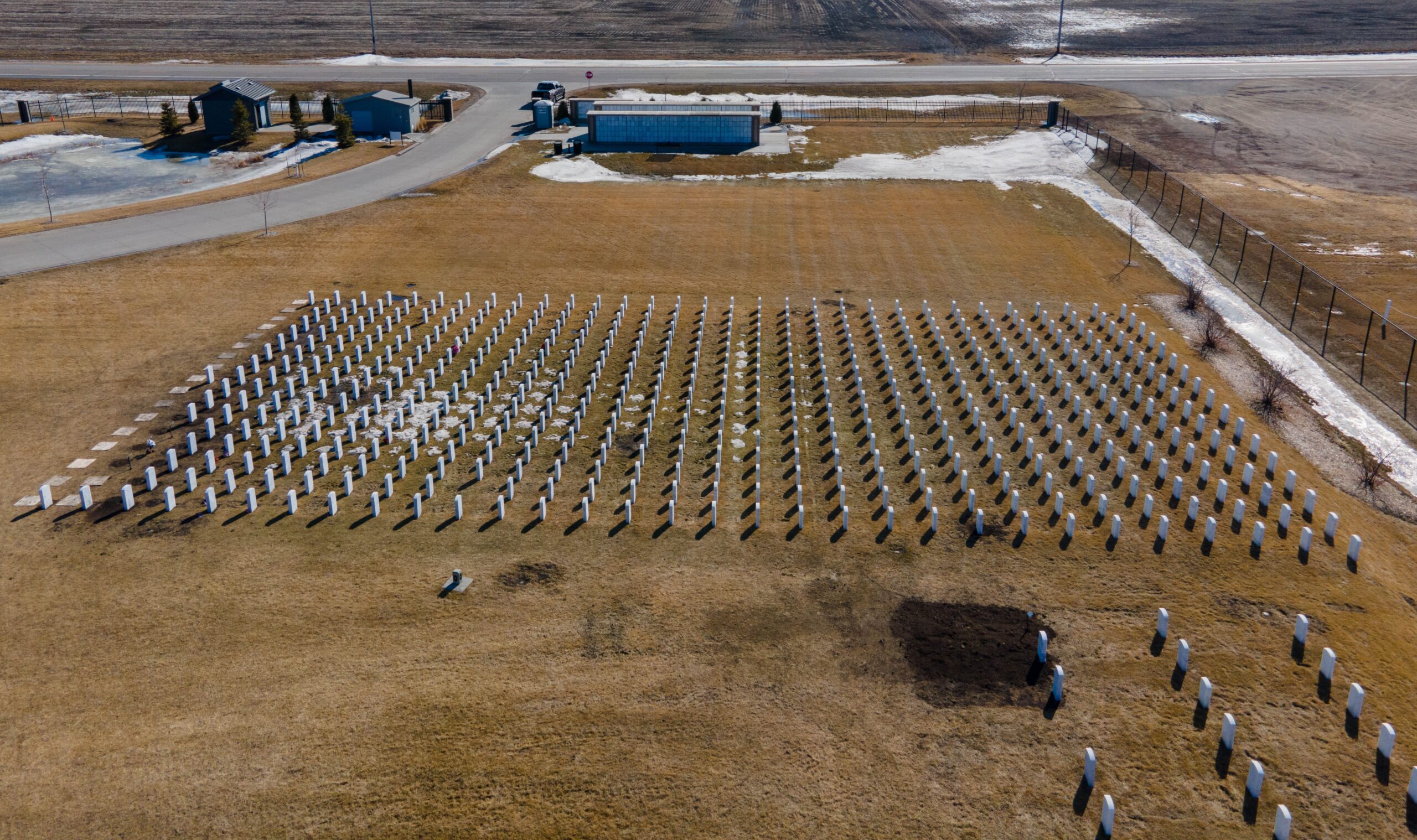- The Honor Guard conducts an interment ceremony in frigid, blustery conditions in January 2025.
- Scale models of the Veterans National Cemetery
By Michael Stein
A veteran passes away. The veteran’s family wishes for their loved on to be laid to rest in a U.S. National Cemetery with an Honor Guard interment ceremony. For those families in the Red River Valley and surrounding area, the Fargo National Cemetery, one of eight sites across the country established under the Department of Veterans Affairs Rural Initiative, is located in southeast North Dakota between Fargo and Harwood.
The Department of Veteran Affairs (VA) operates the 34-acre Fargo National Cemetery, which serves the burial needs of more than 30,000 veterans, their spouses and eligible family members.
Dedicated September 7, 2019, the VA began conducting interments the following month. Interment ceremonies not only honor the veteran’s service to country but indicates to the community and veterans’ families that their sacrifices do not go unrecognized. The first phase of cemetery development created more than 3,000 casket and cremation gravesites to accommodate burials for the next several years. By 2021, the Fargo National Cemetery was holding about 250 interment ceremonies per year.
Although the appropriate honor is accorded the veteran, the actual ceremony, complete with the Honor Guard, is exposed to the elements—rain, wind, snow, bitter cold, and intense heat, not to mention no indoor restrooms. For the last few years, a dedicated group of local leaders have worked tirelessly to ensure that veterans, their families, and the public are provided with a space that will bring the National Cemetery full circle.
Jason Hicks, commander of the Fargo Memorial Honor Guard, has been instrumental in leading the charge for National Cemetery facility. The financial appropriations, the building plan and design, and all the political hoops that one must jump through are complete. Outside of a few details, the project is a “go.”
Recalling when plans for a National Cemetery were first announced, Hicks said it was vital to ensure that an Honor Guard was in place specifically for interment ceremonies. “A single organization by itself could not keep up with the demand for Honor Guards. So, we created an organization called the United Patriot Bodies, which is represented by all the veterans’ organizations like the Legion and VFW. That was the birth of Fargo Memorial Honor Guard.”
From a grassroots, bare bones start, which meant supplying their own uniforms and equipment, Hicks said, “We quickly saw a need for a building at the National Cemetery because the Honor Guard is out there all the time. Services are performed on the hour with the first one at 9:00 in the morning; the last one might not be until 2 p.m. That means the Honor Guard members either stay out there and sit in their cars or drive back and forth from town.”
Another critical factor for pursuing a building was the infamous North Dakota elements. Last January, for example, the Memorial Honor Guard conducted a service in biting blizzard-like conditions. “The loved ones of our veterans suffer in these conditions, and many are elderly or have physical impairments,” Hicks said. “We felt this was just not right. We knew we could do better.”
Hicks cited the North Dakota Veterans Center in Mandan, which has an indoor facility for conducting interment ceremonies. “We thought, why we can’t have something like that here?”
Pursuing that line of thought, the group started to make inquiries with the VA. The replies were discouraging. “Initially, they said ‘no, we can’t do that.’ The cemetery is under 100 acres, so they would never put a building there,” Hicks said.
While they never expected the building project to be a cakewalk, the group first had to cut through a mountain of bureaucracy to get it started. “One of the biggest issues was that no similar structure like this existed at any National Cemetery,” Graalum said. “Ours was a rural cemetery and buildings were not supposed to be there. We said, ‘Why not?’ A lot of the pushback came from down south where they don’t have winters like we have here. So that’s why we did it as a private project.”
“We started working different angles and were able to get Senator John Hoeven on board,” Hicks said. “We told him what we wanted to do and that we needed help getting a good solid plan in place and moving it forward.”
“These guys not only dedicated their lives to the service of our country, but since they’ve come back, they’re the Honor Guard,” Hoeven wrote in a public statement. “They provide these interments. They’re out there in the freezing cold. This is about getting a Veterans Memorial Facility that will not only enable them to provide that service, but for all of our heroes who are buried out there and their families.”
Once the VA was on board with the project, the group turned to the NDSU School of Architecture for a building plan. “We had a contest,” Hicks said. “We chose one design from 11 submissions. With that we said, ‘now let’s start raising money.’”
Hicks and Honor Guard member Jim Graalum, who serves as project coordinator, knocked on countless doors, spoke to dozens of organizations, and sent letter after letter to potential donors. “Any type of service club that would let us talk, we would speak to—and we did that for a long time. We have good friends in the media, so they provided airtime on what we were trying to do. Hoeven then worked with the VA to get the cemetery expanded from five to 30 acres.”
Through those efforts, the Honor Guard organization raised $1.5 million for the project, including more than 790 donations from organizations and individuals throughout North Dakota and western Minnesota. Both the North Dakota Senate and House have approved a $3 million funding bill for the Veterans’ National Cemetery, which, as of late April, is awaiting the governor’s signature.
“That gives us the final push—enough money to construct the building with some flexibility,” Hicks said. “Now we just need the VA to approve our building plan that we submitted last October.”
The building, which will greatly enhance the Fargo National Cemetery, will include a chapel for the burial services, a gathering area for friends and family, a break room for the Honor Guard, restrooms, and office for VA staff, garage, and a gallery to display artifacts, military uniforms, and items that signify military history.
The gathering area will have a major impact on families, especially those who have driven hundreds of miles for the ceremony, which lasts about 20 minutes. “Families are here mourning the loss of a loved one,” Hicks said. “The gathering space allows time for fellowship and remembrance.”
“The driving force to have a gallery is that it allows families to see how their loved ones served their country and their sacrifices,” Graalum said. “The Red River Valley has a very high veteran population with about 33,000 in a 100-mile radius. And it will be available to the public Monday through Friday.”
“Once the last nail is pounded, we will physically turn over the keys to the VA,” Hicks said. “They will take care of all the maintenance and upkeep of the building.”
Speaking for everyone who fought the good fight to make this project a reality, Hicks said, “This has been our way of giving back. None of us are paid to be out there. We’re volunteers. There is no amount of money that we can be paid because of the feeling it gives you. It means so much to the veterans’ families for us to be out there. We believe in this so much that we want to do right for our fellow veterans and give them the sendoff they deserve.”






